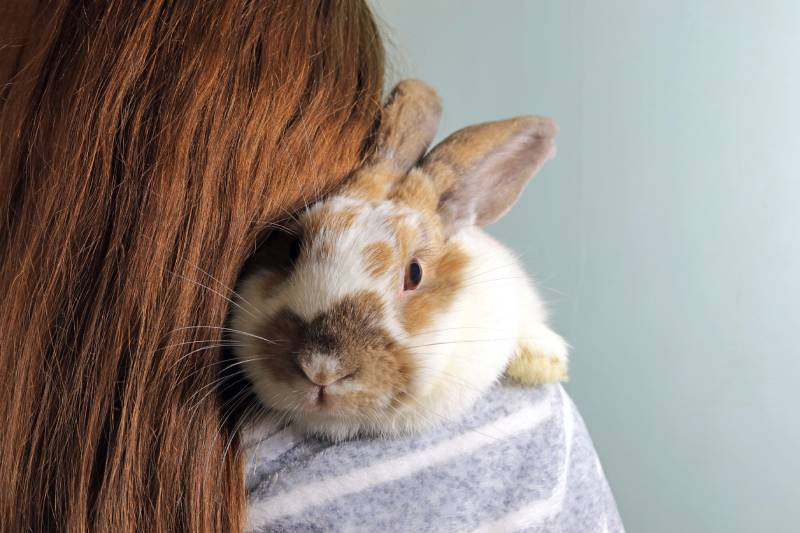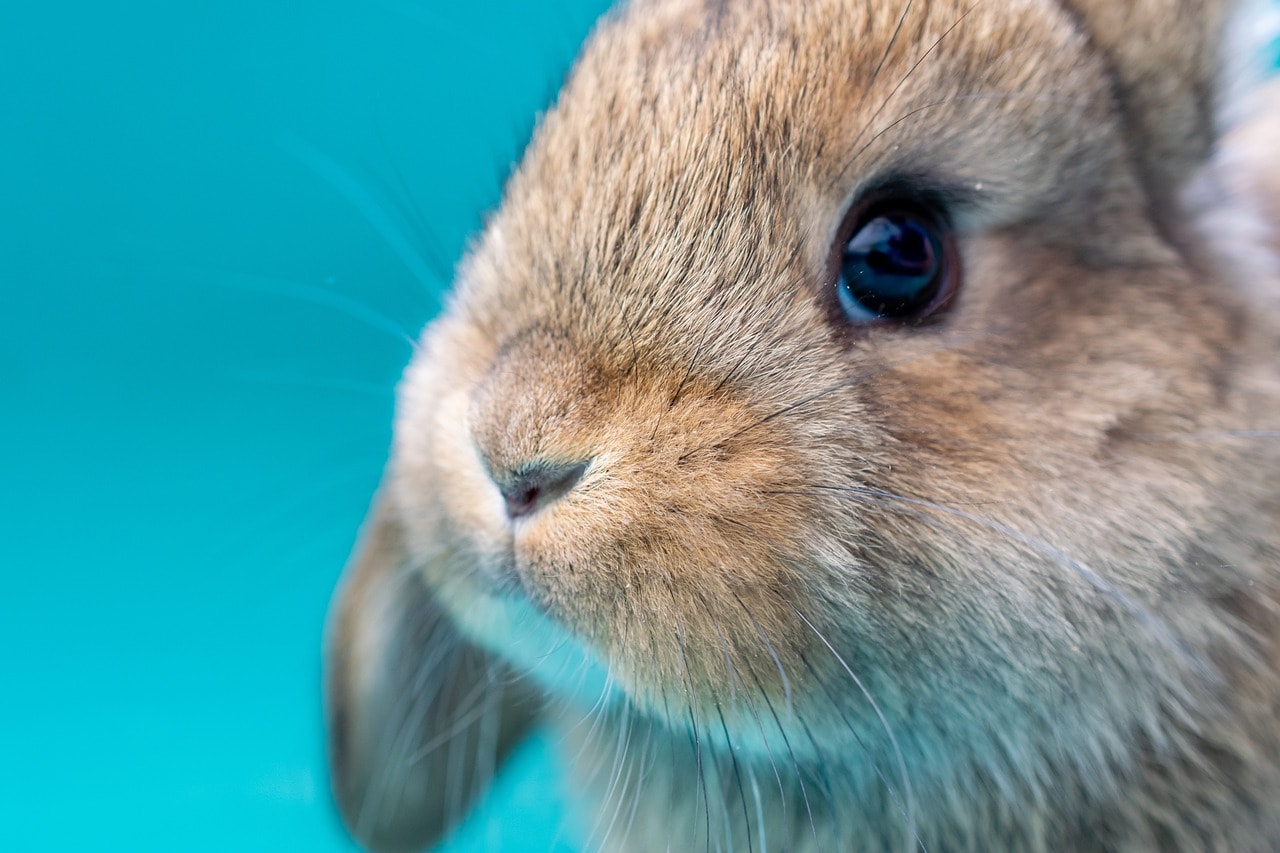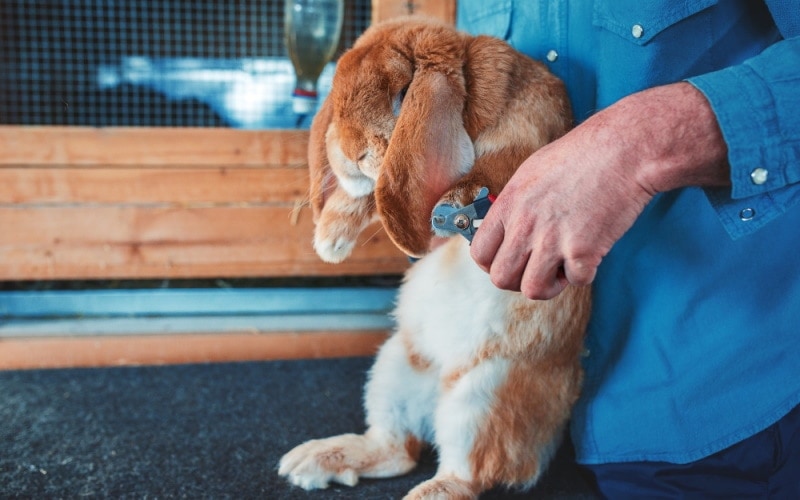Can Rabbits Drink Out of a Bowl? Pros, Cons & Factors to Consider

Updated on
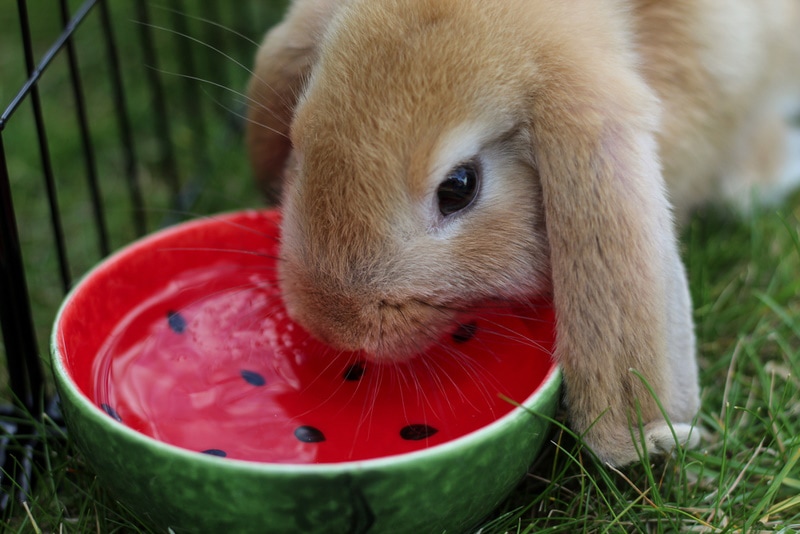
Click to Skip Ahead
Are you a proud rabbit owner or considering adopting one of these adorable furry creatures? One of the essential aspects of caring for a pet rabbit is ensuring they have access to clean and fresh water. While yes, rabbits can drink from a regular water dish, there is an ongoing debate about whether it is the safest and most effective way to keep a pet rabbit hydrated. So, in this article, we delve into the topic of whether rabbits can drink out of a bowl and explore the pros and cons of using a bowl as a water source for rabbits.
Can Rabbits Drink Out of a Bowl?
While rabbits can drink out of a bowl, it’s not really the most ideal method for providing them with water. Why? Because bowls can easily tip over, become contaminated with food or other debris, and may not provide a consistent supply of clean water. So, it’s best to use a water bottle specifically designed for rabbits, as this provides a more reliable and hygienic source of water.
Water bottles can be securely attached to the rabbit’s enclosure, ensuring that it remains upright and accessible at all times. Also, water bottles have a small metal tube or ball bearing that allows the rabbit to sip water without the risk of spilling or wasting it. This method is also beneficial for monitoring the rabbit’s water intake, as you can easily see how much they’ve consumed throughout the day.
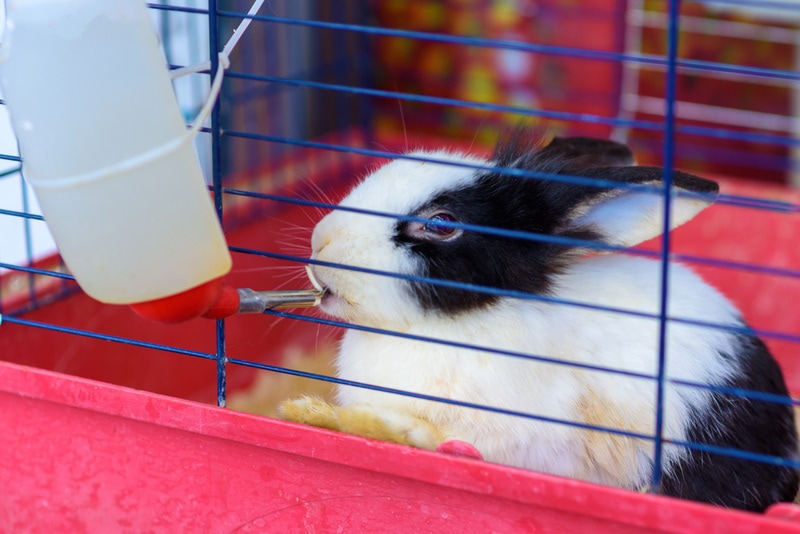
The Importance of Hydration for Rabbits
Just like any other living creature, rabbits require proper hydration to maintain their overall health and well-being. Water plays a vital role in various bodily functions, including digestion, metabolism, temperature regulation, and the transportation of nutrients throughout their bodies. There’s a common misconception that rabbits do not need water due to their high-fiber diet but that is false and going without water can be detrimental to their health. While it’s true that rabbits can obtain water from their food, it’s not enough to meet their daily requirements.
Also, rabbits can often become picky eaters and may not consume enough water through their diet alone. Without adequate water intake, rabbits can quickly become dehydrated, leading to a range of health problems and potentially life-threatening conditions. It’s crucial for rabbit owners to prioritize providing their furry friends with a constant supply of clean and fresh water.
Rabbits have a high water requirement due to their diet, which mainly consists of fibrous plant material. Unlike cats and dogs, rabbits don’t have a strong thirst drive, and they obtain a significant portion of their water intake from the food they consume. However, this doesn’t mean that rabbits do not need access to water. On the contrary, water is still an essential component of their diet and should be readily available to them at all times. So, whether it’s through a water bottle or a bowl, ensuring your rabbit stays hydrated is crucial for their overall health and well-being.
Pros & Cons of Using a Water Bowl for Rabbits
Using a water bowl as a water source for rabbits comes with its own set of advantages and disadvantages. Understanding these pros and cons can perhaps help you make an informed decision about whether a bowl is the right choice for your rabbit.
Pros of Using a Water Bowl
Natural Drinking Behavior
Rabbits are naturally inclined to drink by lapping up water, and a bowl allows them to exhibit this behavior. This can provide a more natural and comfortable drinking experience for your furry friend.
Easier Access to Water
Some rabbits may find it easier to drink from a bowl compared to a water bottle. This is particularly true for younger rabbits or those with dental issues that may find it challenging to use a water bottle’s sipper tube.
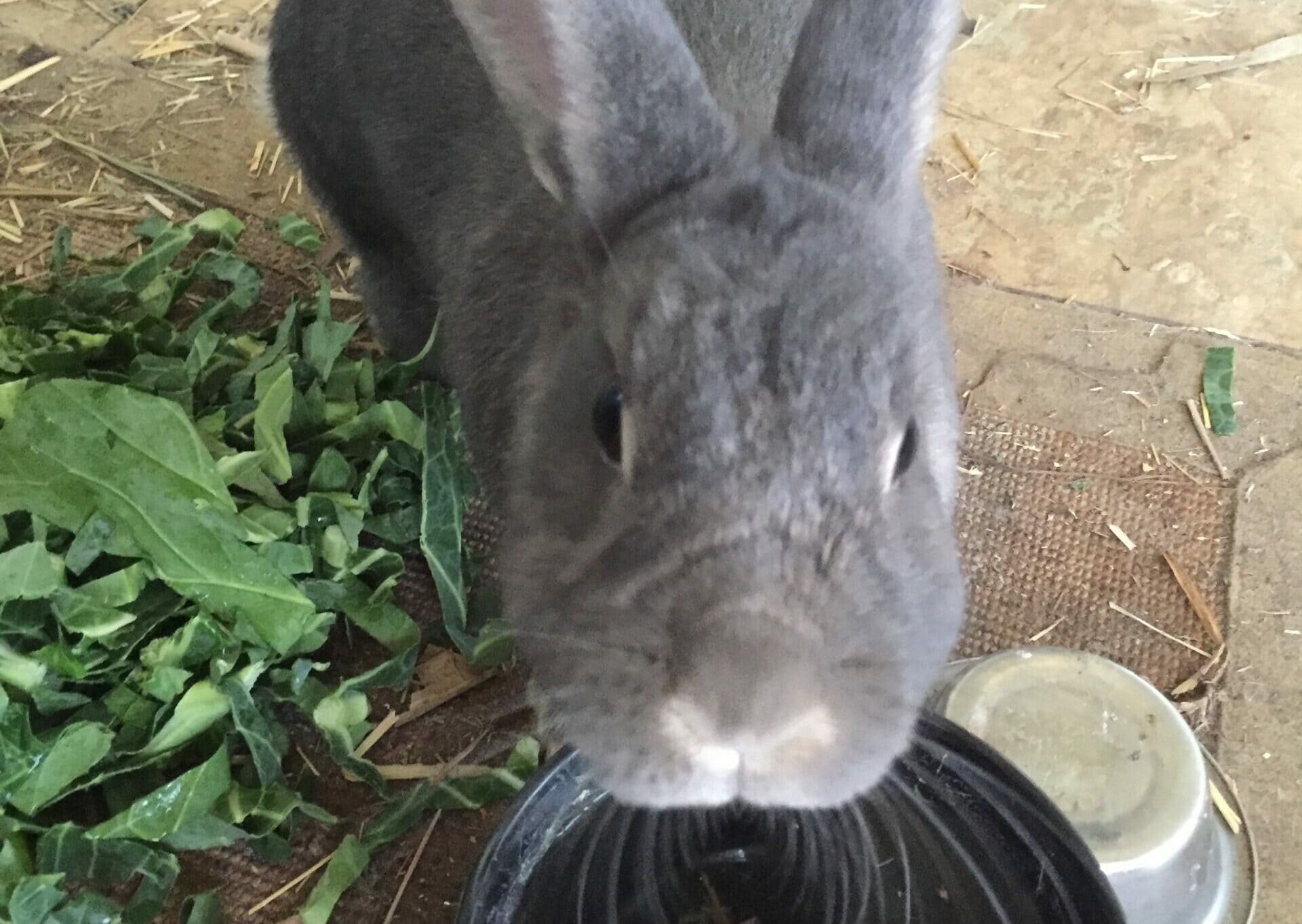
Additional Source of Enrichment
A water bowl can provide rabbits with an additional source of mental stimulation and enrichment. They may enjoy playing with the water or dipping their paws in it, adding a touch of fun to their daily routine.
Cons of Using a Water Bowl
Contamination & Spillage
Unlike a water bottle, a bowl is more susceptible to contamination from debris, fur, or food particles. It also has a higher risk of being tipped over, resulting in spillage and a wet living environment for your rabbit.
Maintenance & Cleanliness
Keeping the water bowl clean and free from bacteria is crucial to prevent any potential health issues. Regular monitoring and cleaning are necessary to ensure your rabbit has access to fresh and uncontaminated water at all times.
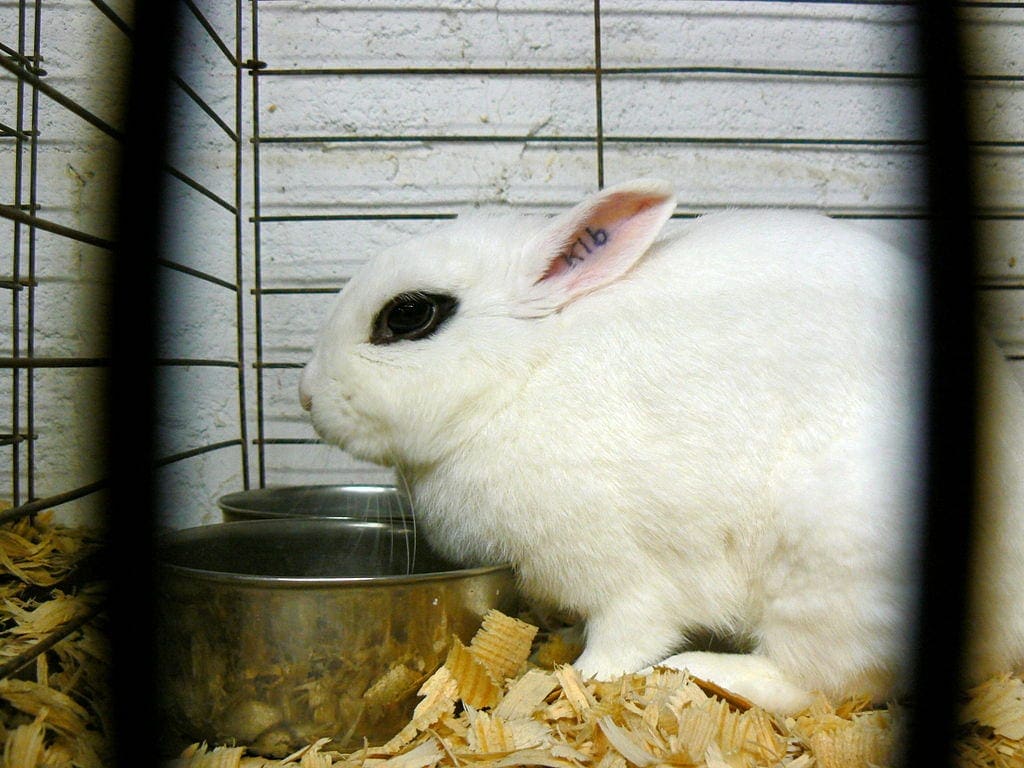
Potential for Accidents
Rabbits are known for their curious nature, and a bowl filled with water may attract their attention. There is a risk of rabbits accidentally falling into the bowl, which can be dangerous, especially if they are unable to get out on their own.
Considering these pros and cons can help you weigh the benefits and drawbacks of using a water bowl for your rabbit. Ultimately, the decision should be based on your rabbit’s individual needs, preferences, and behavior.
Alternatives to Water Bowls
While using a water bowl is a viable option for rabbits, there are alternative methods to provide them with water if you decide against using a bowl. One popular alternative is using a water bottle, which is a common choice among rabbit owners. Water bottles offer several advantages, such as reducing the risk of contamination, preventing spillage, and keeping the water fresh for longer periods.
When choosing a water bottle, opt for one with a sipper tube made of stainless steel or glass, as these materials are less likely to harbor bacteria. It’s important to clean the water bottle and replace the water regularly to maintain its cleanliness. Also, ensure the water bottle is securely attached to the rabbit’s enclosure, at a height that allows them to comfortably reach the sipper tube.
Another option is using a water dispenser, which is a gravity-fed system that constantly replenishes the water as the rabbit drinks. These dispensers can be attached to the cage or placed on a stable surface, providing a continuous supply of fresh water. However, it’s crucial to monitor the water level and clean the dispenser regularly to prevent any potential bacterial growth. When considering alternatives to water bowls, it’s essential to observe your rabbit’s behavior and preferences.
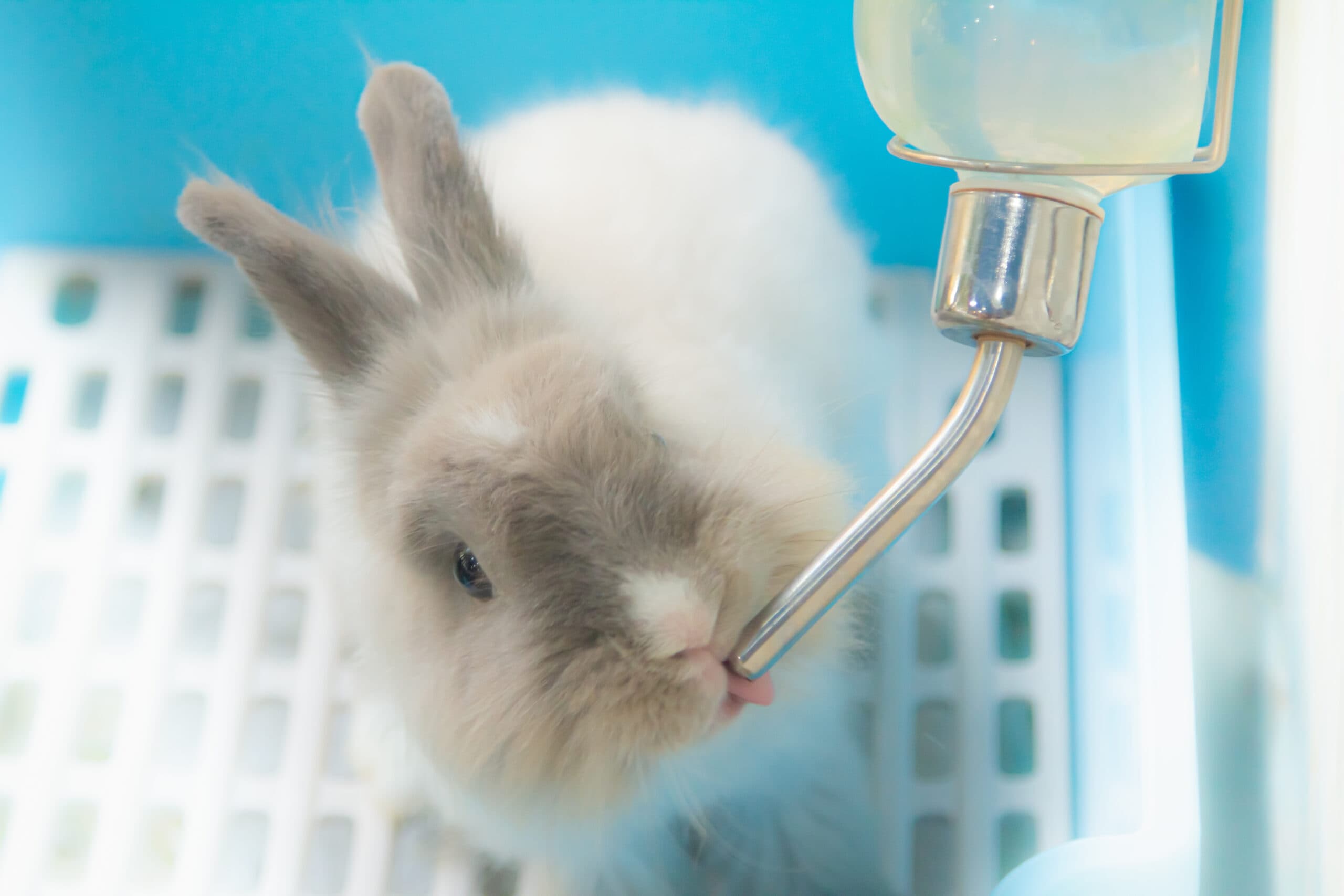
Factors to Consider When Choosing the Water Bowl
If you decide to use a water bowl for your rabbit, there are several factors to consider when choosing the right one. These factors can help ensure your rabbit’s safety, comfort, and overall well-being. Here are some key factors to keep in mind:
Material
Opt for a heavy, ceramic bowl that is difficult for your rabbit to tip over. Ceramic bowls are generally more durable and resistant to scratches, making them a suitable choice for rabbits.
Size & Depth
Choose a bowl that is shallow enough for your rabbit to comfortably drink from without straining their neck. The diameter of the bowl should be wide enough to accommodate your rabbit’s face and allow them to drink without any difficulty.
Stability
Ensure the water bowl is stable and securely placed to prevent any accidental tipping or spillage. A bowl with a wide base and a non-slip bottom can provide added stability, reducing the risk of accidents.
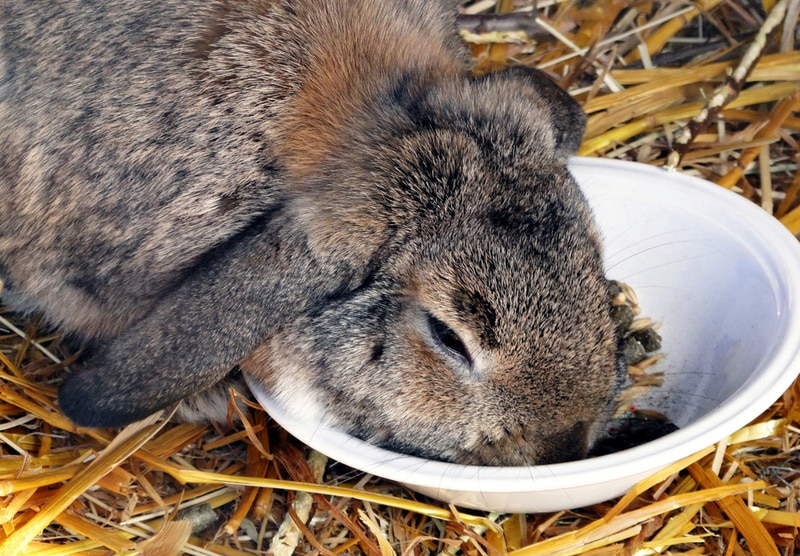
Ease of Cleaning
Select a bowl that is easy to clean and maintain. Smooth surfaces without any crevices or hard-to-reach corners are preferable, as they minimize the chances of bacterial growth and make cleaning more convenient.
Number of Rabbits
Consider the number of rabbits you have and their drinking habits. If you have multiple rabbits, it may be necessary to provide multiple bowls to ensure each rabbit has easy access to water.
Lastly, be sure to regularly monitor the bowl for any signs of damage or wear and tear, and replace it if necessary to maintain a safe and hygienic water source for your rabbit.
FAQs About Rabbits & Hydration
How do I know if my rabbit is dehydrated?
One of the most common indicators is a lack of moisture in the rabbit’s skin. If you gently pinch the skin on the back of their neck and it does not quickly return to its normal position, this may be a sign of dehydration. Another telltale sign is dryness in their mouth and nose. If your rabbit’s mouth appears sticky or their nose feels dry, they may be dehydrated. It’s also important to monitor their water intake. If you notice that your rabbit is drinking significantly less water than usual, they could be dehydrated. Dehydration can be a serious issue for rabbits, as it can lead to various health complications. So, it’s best to seek vet care immediately if you suspect your rabbit is dehydrated.
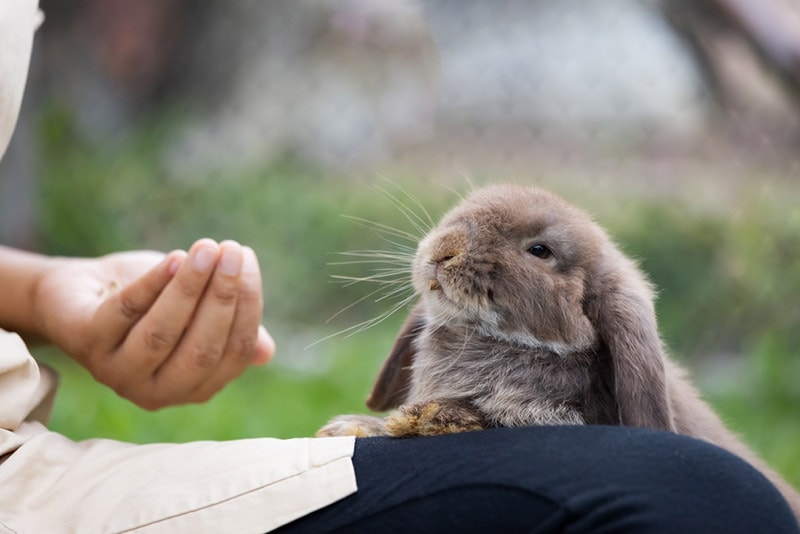
How much water should my rabbit get a day?
On average, a rabbit should consume approximately 50–150 milliliters of water per kilogram of body weight each day. This means that a 2-kilogram rabbit would need about 100–300 milliliters of water daily. It’s important to provide fresh, clean water at all times, preferably in a water bottle or bowl that is easy for the rabbit to access. Additionally, during warmer months or if your rabbit is nursing or pregnant, they may require more water to stay properly hydrated.
Wrapping Things Up
So, it’s generally not recommended to give rabbits water from a bowl, as rabbits are prone to tipping over their water bowls, leading to a messy and potentially unsanitary situation. Also, bowls can easily become contaminated with bacteria or debris, which can pose health risks to rabbits. But there are alternative bowls available to consider and ways to introduce and even train your rabbit on how to use the bowl. That being stated, water bottles are specifically designed for small animals like rabbits and are a much safer and hygienic option for providing them with water.
Featured Image Credit: Marie Yang, Shutterstock


